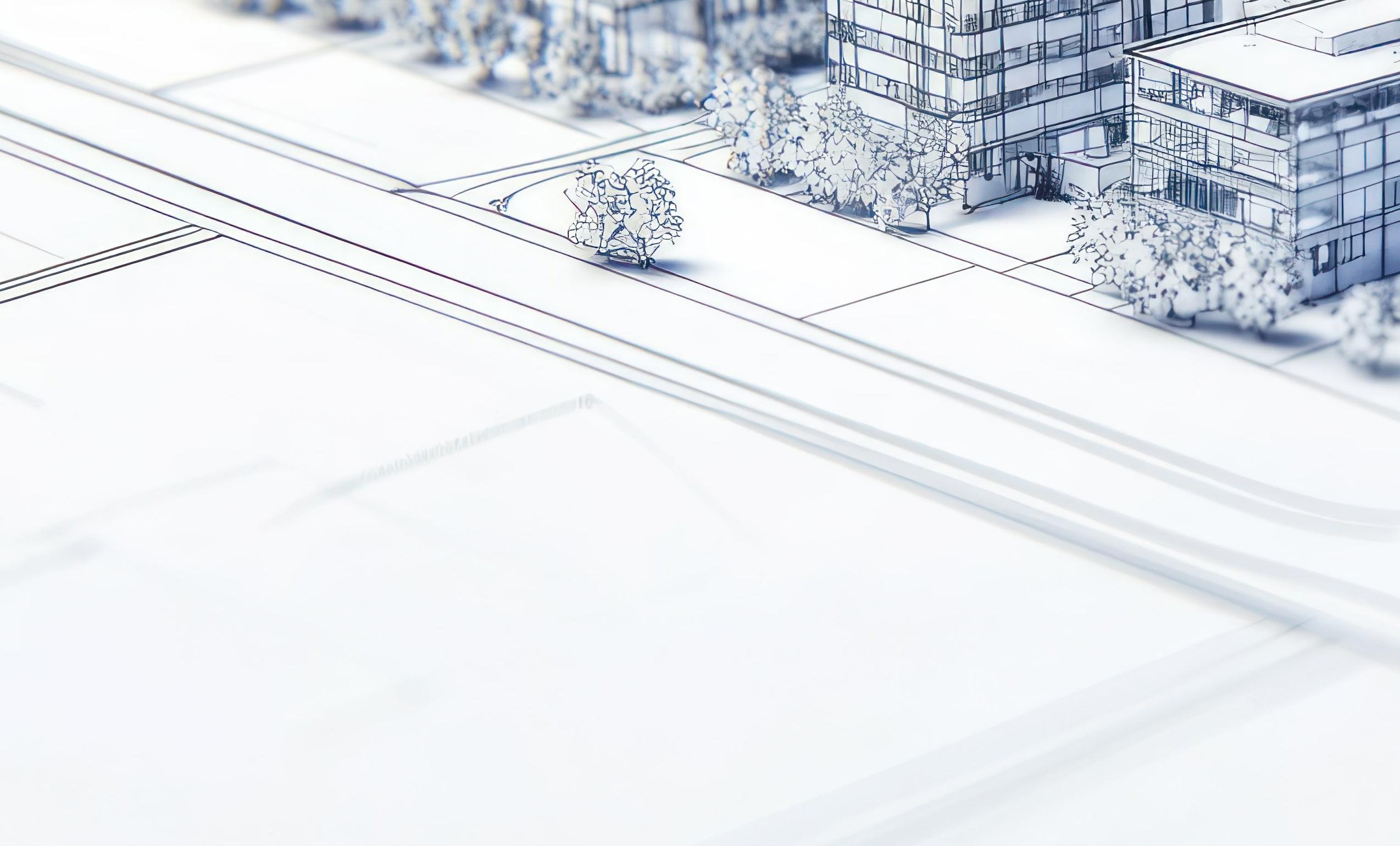
11 minute read
Architectural Reviews and Approvals in Rebuilding
Considerations for Associations Dealing with Destruction Caused by Natural Disasters
By Karyn A. Larko, Esq.
California has been hit by wildfires and other natural disasters in recent years. In the aftermath of such disasters, associations and their members may be faced with having to reconstruct their communities. Some of the issues association boards and managers should consider when homes and condominiums (“Dwellings”) must be reconstructed are addressed below.
Facilitating Reconstruction
The reconstruction process can take years to complete. By acting now to ensure the original construction plans are kept in a safe place, if there is a disaster, the association can compare owner submitted plans for reconstruction with the original construction plans, and more quickly identify and evaluate any differences that will impact the appearance of the new dwellings. A licensed architect should be retained to perform this comparison and assist the board or architectural committee (“AC”) in evaluating differences.
The board should also adopt clear and detailed guidelines with the help of an architect, addressing the information and documentation needed to review owner reconstruction applications. These guidelines, which can be adopted through the rule adoption procedures in Civil Code § 4360 (or as emergency rules, if necessary), should address whether any changes in the dimensions or locations of the reconstructed dwellings will be considered, as well as whether any other modifications will be considered or required. Providing this information up front can save owners time and money in planning for their reconstruction, reduce owner frustration and expedite the reconstruction.
Because building code requirements may have changed since the initial construction of the dwellings, the board or AC should work with an architect or general contractor to identify any such changes that will impact the appearance of the reconstructed dwellings, preferably before applications to reconstruct are submitted. This will further facilitate the application review process.
Requests To Change Dimensions Or Locations Of Reconstructed Dwellings
While the association is generally responsible for the reconstruction of the buildings in a condominium complex, there are instances where condominiums are built as single family detached dwellings or duplexes, for example, and the CC&Rs assign responsibility for reconstruction to the owners. In such instances, it is generally not possible for the board or AC to approve changes to the dimensions or locations of units and buildings because the dimensions and locations of the units and buildings are dictated by the condominium plan. To approve such changes, the condominium plan must be amended.
When it comes to planned developments, the board or AC may generally approve alterations to reconstructed dwellings, subject to any size, set back or other construction requirements and restrictions contained in the CC&Rs and rules. It may be possible for a board to grant variances to requirements set forth in the CC&Rs, if appropriate, depending on the precise wording of the CC&Rs. Upon a vote of the members, it may also be possible to amend the CC&Rs to revise these requirements as the board deems appropriate.
In the event construction requirements and restrictions are contained solely in the rules, the board or, in some instances, the AC, may amend the rules.
Requests For Other Changes To Reconstructed Dwellings
For aspects of construction which may not be specified in the CC&Rs (e.g., color schemes, exterior finishes), an association can be more flexible in approving modifications to the originally constructed dwellings. However, as quickly as feasible, the board or AC should meet with an architect to determine what kinds of changes should and should not be permitted to ensure the reconstructed dwellings are in harmony with any surviving structures. If necessary to expedite approvals to avoid risk of substantial economic loss to the association, these changes can be adopted as emergency rules pursuant to Civil Code § 4360(d) so owners have this information when planning their reconstruction.
A board may also want to consider amending the CC&Rs or rules to allow or require nonflammable roofs, fire-resistant landscaping or other changes, to better protect the community from future disasters.
Time Limits For Reconstruction
The governing documents may impose time limits on when owners must start and complete their reconstruction. It is important for the board to promptly review any time limits and evaluate whether these limits are reasonable given the extent of the damage to the community and surrounding area, as well as related environmental challenges (e.g. issues related to the removal and disposal of construction debris), the availability of architects and contractors to prepare plans and perform reconstruction, possible permitting and inspection delays, materials shortages and delays in the processing of insurance claims.
If the governing documents mandate a shorter reconstruction timeline than is reasonable under the circumstances, the board should amend the timeline. If the governing documents do not impose time limits on reconstruction, the board may want to amend the governing documents to include a reasonable time limit to help ensure owners diligently pursue the reconstruction of their dwellings.
On a related note, if the governing documents do not impose a reasonable deadline for clearing properties within the community of any construction rubble and other debris, the governing documents should be amended, or an emergency rule adopted, to impose a deadline since the existence of these materials may pose a health and safety hazard for the community. Additionally, it may take years for owners to rebuild and some owners may not be able to rebuild. Removing the rubble and debris will help improve the appearance of the community until the community can be fully reconstructed.
THE USE OF CONSTRUCTION TRAILERS, PORTA-POTTIES, LIVE-IN TRAILERS, RVS, ETC. DURING RECONSTRUCTION
If the governing documents prohibit construction trailers, RVs or porta-potties, the
board should consider amending the governing documents, or granting variances, if permitted by the governing documents, to temporarily lift this prohibition in the event of significant destruction. The amendment can and should limit the use of these items to specified periods of time and purposes, such as for construction supervision and meetings.
COMMUNICATIONS
Communicating with displaced owners can be especially challenging. Providing the CC&Rs, architectural/construction rules and the architectural application form on the association’s website and proactively requesting updated contact information can help facilitate the reconstruction process and enable the association to timely address any reconstruction issues.
PRACTICE TIPS
Many CC&Rs contain an article that expressly addresses destruction of the community. Reviewing and, if appropriate, amending this article to address reconstruction issues more fully before a disaster occurs could help accelerate the reconstruction process.
Proactively establishing an easy process for owners to submit updated contact information to the management company, such as through a website or portal, and periodically notifying owners of this process can help to re-establish communications with owners after a disaster.

Karyn A. Larko, Esq. is an attorney at Epsten APC based out of San Diego, California. Larko specializes in community association counsel with 16 years of experience in the industry.

Contracting for Disaster
Disasters such as wildfires can severely impact an association’s contracts with its vendors. As the risk of destruction increases throughout California, associations may find themselves paying for services that are never performed. However, there are a few defenses and some key provisions that associations can include in their contracts with vendors to protect themselves from the unexpected.
Without express terms regarding termination, associations are left with weak common-law contract defense s
In the absence of express contract terms on the subject, three common law doctrines or “defenses” may apply to an association’s contractual obligations in the event of a disaster.
The first defense is the doctrine of impossibility, which provides that contractual performance may be excused where performance has been rendered impossible due to unforeseeable events entirely outside the control of the contracting parties. If a court concludes that the performance of the contract has been rendered impossible, the court will generally discharge the parties from the contract.
The second defense is the doctrine of impracticability, where performance can only be done at an excessive and unreasonable cost. To argue impracticability, an association must show (1) an external event rendered contractual performance impossible or extremely
difficult, and (2) the nonoccurrence of the external event was a “basic assumption” of the contract. To satisfy this “basic assumption” factor, courts look at whether the external event was unforeseeable and whether the risk of the external event happening was within the parties’ control.
Obviously, wildfires and other natural disasters are not within the control of the parties. However, the issue becomes whether these events are foreseeable The immense increase in the force and frequency of wildfires within the state will make it difficult to successfully argue that such an event was not foreseeable.
The last defense under common law is the doctrine of frustration of purpose. Unlike impossibility and impracticability, frustration of purpose applies even where a party can still perform. The argument here is that performing does not make sense because the scope of work has changed significantly
from what was originally contracted for. An example is where most of the landscaping to be maintained has burned down.
The two main factors courts look at to determine whether to apply the doctrine of frustration of purpose are totality and foreseeability. The more totally frustrated the party is (i.e., the less sense it makes to perform), the more likely this totality requirement will be met. However, once again, we run into the issue of foreseeability.
While these three common law defenses may apply whether such language is expressly included in an association’s contract, the courts rigidly apply the standards discussed above and prefer to put the onus on the contracting parties to account for these risks beforehand and adhere to the contracts they sign.
As wildfires become more frequent and more devastating, these defenses will be increasingly difficult to rely upon. Therefore, associations should allocate risk expressly via the terms of their contracts by including the following key provisions.
Force majeure
A term you have probably heard or seen before is “force majeure.” Force majeure is a French term meaning something along the lines of a “superior force.” It is often used interchangeably with “acts of god,” however, force majeure is more expansive and often includes acts of people such as riots, strikes, and wars.
Force majeure is a clause that details the rights and remedies of the parties in the case of an external event happening that is beyond the parties’ control. Such a term allows the parties to expressly allocate risk for certain events by providing notice to the other party about the types of events that may excuse their performance.
Without a force majeure clause in the contract, parties could be at the mercy of a court’s interpretation and application of the common law doctrines detailed above. This is generally not favorable to associations due to the increased foreseeability of disasters such as wildfires as discussed above.
Because of this, it is paramount for associations to include a clear and concise force majeure clause in any contract where the rights and duties of the association could be affected by a wildfire, earthquake, or other similarly devastating event. This is
especially true as the association’s duties under its contracts are typically to provide payment in exchange for services.
A recent example is the COVID-19 pandemic, during which many businesses attempted to rely on force majeure provisions in their leases to withhold rent payments while their businesses were forced to shut down. Force majeure provisions typically did not specifically state that businesses could withhold rent if there was a pandemic, and courts often held that COVID-19 did not make it impossible or impracticable for these businesses to still pay rent. If they had the money, they were required to do so regardless of whether their doors could stay open.
Termination at will
Another provision to include in any contract is termination at will or sometimes called termination for convenience. Such a provision allows one party to terminate the contract upon providing prior written notice to the other party. Typically, such clauses will include a 30- or 60-day prior written notice requirement and allow for the vendor to be paid for services performed up to the date of termination. This provision also provides associations with a way out of the contract if something happens other than a force majeure event, such as simply being unhappy with the other party’s performance or running short of funds.
Conclusion
Whenever interpreting, drafting or negotiating a contract, you should always contact your association’s legal counsel. They are in the best position to provide legal guidance and properly allocate risk between an association and its vendors at the outset to avoid serious issues from rearing their head later down the road.

Samuel Roth, Esq. is an attorney at Kriger & Schuber, APC in La Mesa, specializing in Community Association Law with three years of industry experience.






